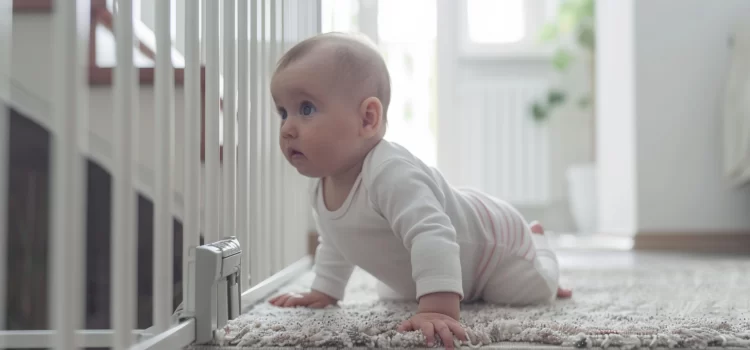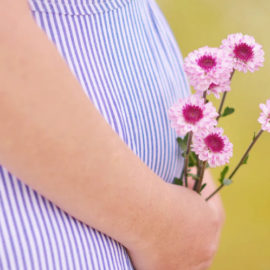
How do you keep your newborn safe at home? Do you want to do everything possible to protect your little one?
S.M. Gross, author of The Simplest Baby Book in the World, offers valuable newborn safety tips for new parents. This comprehensive guide covers everything from creating a safe sleep environment to childproofing your home.
Continue reading to learn how to create a secure environment for your baby.
Essential Newborn Safety Tips for Parents
When selecting furnishings for a nursery, prioritizing safety and sustainability is crucial, especially when it comes to the crib. As you prepare for your little one’s arrival, it’s important to familiarize yourself with newborn safety tips to ensure a secure environment for your baby.
Choose a sturdy crib with firmly attached sides and slats spaced no more than 2 3/8 inches apart. Opt for a crib with a solid headboard without decorative cutouts, made from eco-friendly materials finished with safe, non-toxic paint. For maximum safety and health, select a six-inch thick mattress free from allergens, hazardous materials, and substances like phthalates and lead. Place it securely within the crib and look for Greenguard certification.
1. Mitigating Food Allergies and Choking Hazards
Stay vigilant about potential choking hazards and consider introducing potential allergens earlier, under the guidance of a pediatric healthcare expert. This approach may help reduce allergy risks. It’s essential to be proficient in child CPR and the Heimlich maneuver as part of your safety precautions. When offering foods like grapes, make sure to present them safely to minimize choking risks.
2. Creating a Safe Sleep Environment
To protect your baby’s health and promote undisturbed sleep, keep the sleeping environment between 68°F and 72°F. Higher temperatures have been linked to an increased risk of sudden infant death syndrome (SIDS). Also, always put your infant to sleep on their back. This position significantly reduces the risk of unexpected newborn fatalities during sleep.
Proper Use of Sleep Aids
When swaddling, wrap your baby securely but not too tightly, especially around the hips. This technique is only for babies who sleep on their backs. Around 14 weeks, or when your baby starts rolling onto their side, transition from swaddling to a sleep suit or sleep sack.
Keep the crib free of soft bedding like quilts, pillows, bumper pads, or stuffed animals to minimize suffocation risks. Ensure the mattress and bedding fit snugly in the crib, leaving no gaps between the mattress and the sides.
Establishing Healthy Sleep Habits
Create a bedtime routine with soothing activities like a warm bath, changing into pajamas, dimming lights, and reading a quiet story. This signals the end of the day and the start of relaxation time. During nighttime care, minimize eye contact to avoid stimulating your baby. A regular sleep schedule benefits both your infant’s growth and your own well-being.
3. Safely Bathing Your Newborn
To ensure a safe bathing environment, gather all necessary items beforehand. Prepare the infant bathtub with 2-3 inches of warm water and never leave your baby unattended. As your baby grows stronger, transition from sponge baths to tub baths carefully, ensuring the water temperature is safe and using a gentle cloth with baby soap for cleaning.
4. Childproofing Your Home
Place the crib away from windows and install window stops to prevent full opening. Secure window blind cords to reduce strangulation risks and anchor furniture to walls. Use safety latches on cabinet doors, cook on back burners, and attach guards to sharp corners to prevent injuries.
Install protective devices like cabinet locks and barriers, and take precautions against electrical hazards and sharp edges. Secure the oven, shield stove controls, and install locks on door handles. Equip your home with carbon monoxide detectors, smoke alarms, and fire extinguishers to ensure comprehensive safety.






